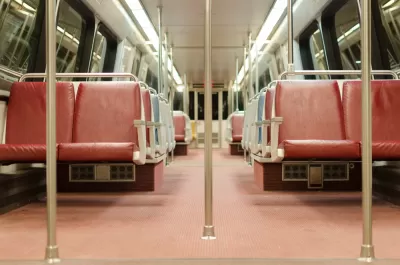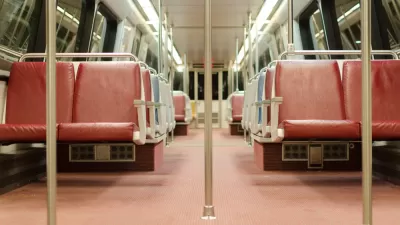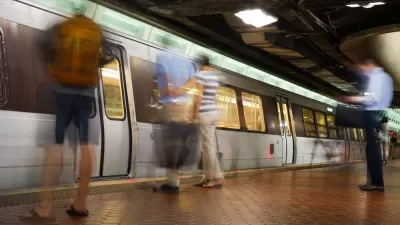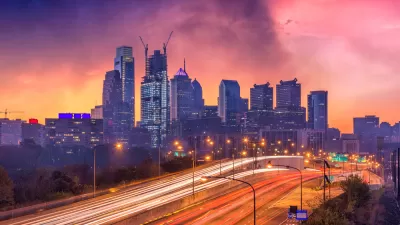A more sedentary approach to commuting is now more common than taking the bus or train to work, trailing only driving to work as the most common commute mode.

"The latest estimates from the U.S. Census Bureau published last week show that approximately 8 million workers primarily work from home," reports Mike Maciag. "That makes telework now second behind only driving as the most common means of getting to work, exceeding public transportation for the first time."
The share of commuters choosing telecommuting in the most recent American Community Survey has grown steadily, reaching 5.2 percent. Transit commuters remains flat at 5 percent.
According to Maciag, several factors are contributing to the growth of telecommuting, including employers programs and improvements in technology.
One key demographic distinction is worth mentioning to complicate the picture: "older workers are significantly more likely to telework than younger age groups."
Maciag lists more details about the data and also a few reasons why public transit's commute share has been suppressed in recent years.
FULL STORY: More Americans Now Telecommute Than Take Public Transportation to Work

Montreal Mall to Become 6,000 Housing Units
Place Versailles will be transformed into a mixed-use complex over the next 25 years.

Planetizen Federal Action Tracker
A weekly monitor of how Trump’s orders and actions are impacting planners and planning in America.

DARTSpace Platform Streamlines Dallas TOD Application Process
The Dallas transit agency hopes a shorter permitting timeline will boost transit-oriented development around rail stations.

Study: 4% of Truckers Lack a Valid Commercial License
Over 56% of inspected trucks had other violations.

Chicago Judge Orders Thousands of Accessible Ped Signals
Only 3% of the city's crossing signals are currently accessible to blind pedestrians.

Philadelphia Swaps Car Lanes for Bikeways in Unanimous Vote
The project will transform one of the handful of streets responsible for 80% of the city’s major crashes.
Urban Design for Planners 1: Software Tools
This six-course series explores essential urban design concepts using open source software and equips planners with the tools they need to participate fully in the urban design process.
Planning for Universal Design
Learn the tools for implementing Universal Design in planning regulations.
City of Mt Shasta
City of Camden Redevelopment Agency
City of Astoria
Transportation Research & Education Center (TREC) at Portland State University
US High Speed Rail Association
City of Camden Redevelopment Agency
Municipality of Princeton (NJ)





























